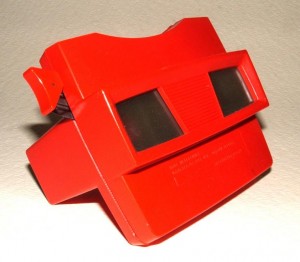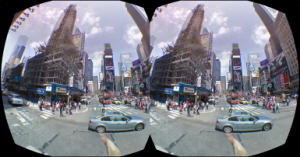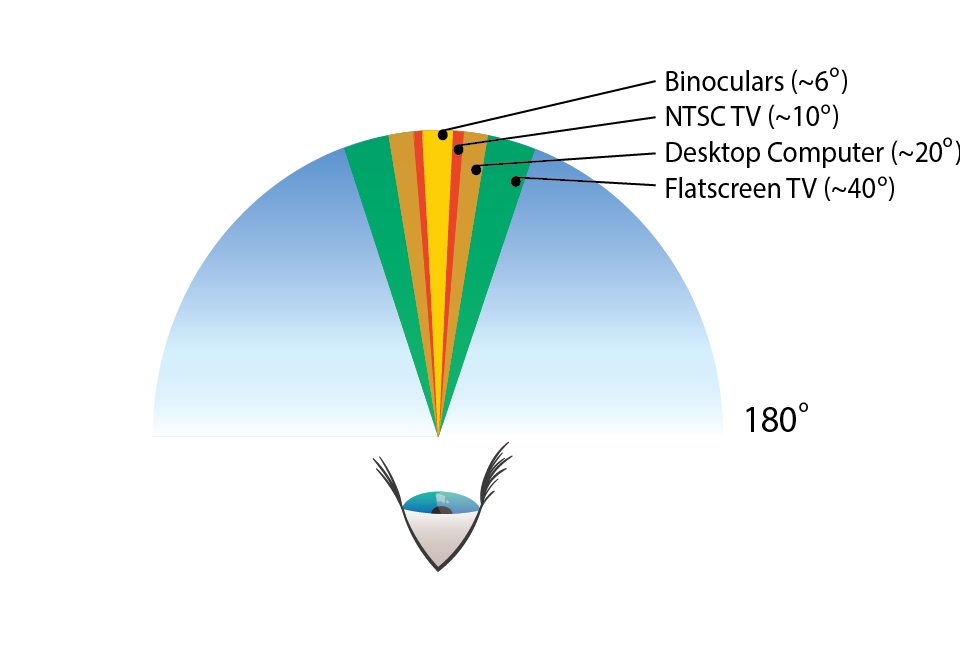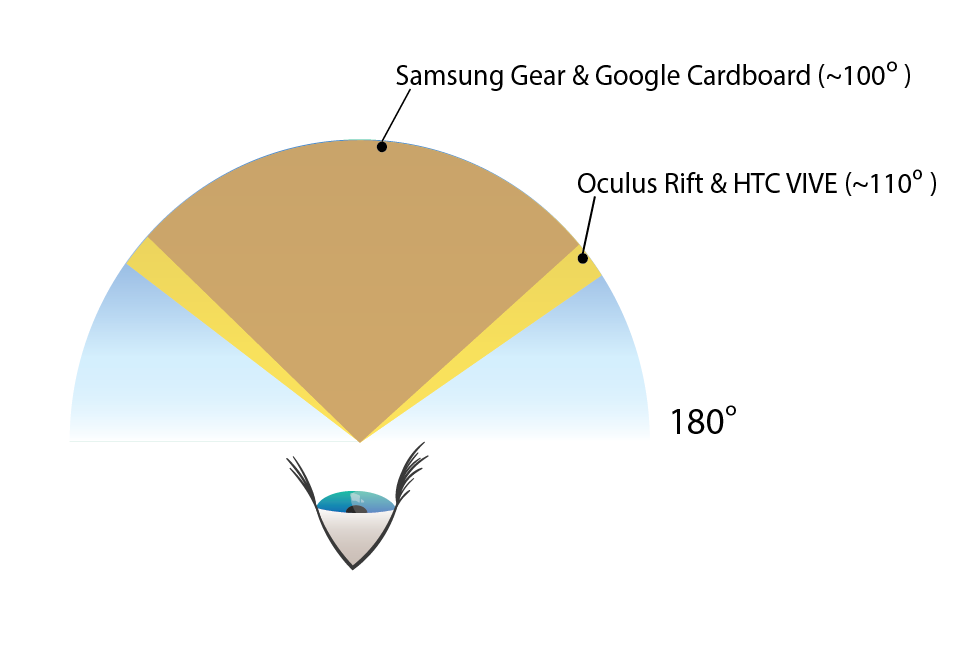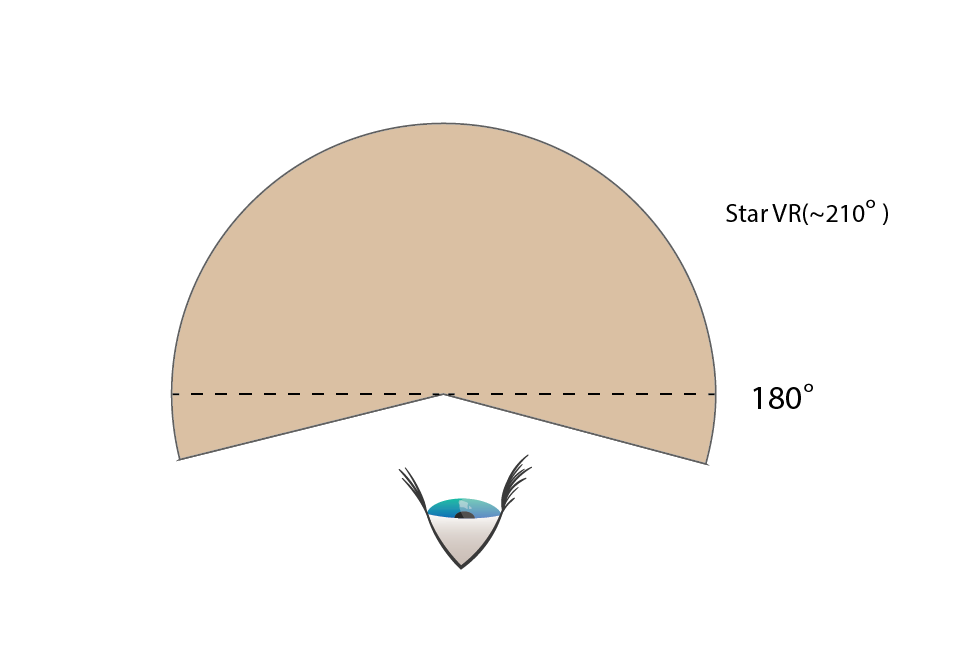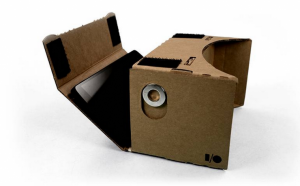6 Reasons that Virtual Reality (VR) is Suddenly (and Rightly) on Everyone’s Lips
Unless you live in Flatland, you have probably heard that Virtual Reality, or VR, with its cousin Augmented Reality, or AR, are on the way up. In 2015, there have been hundreds of millions of dollars of investment into VR, most notably the $50 million input to VR content startup Jaunt.
Even so, there are many urging caution. After all, VR was supposed to have “arrived” in the 1980s, then the 1990s (remember “Lawnmower Man?”), and even in the early 2000s.
If VR has this failure to launch history, why it this time the time that is different? Well, it’s NOT the money alone. The fact that Facebook bought VR headset company Oculus for a cool 2 billion is not enough – there have been plenty of silly ideas in tech over the last few decades. It isn’t that Microsoft has taken a stake in VR and will introduce Minecraft (along with other games) there, though it helps.
The real reason, as always is that the product has changed – and that change is a game-changer.
The following list tells you why VR is really the next coming thing. Don’t you wish you had this list in 1993 for the World Wide Web? Read on, and be ready for a virtually real future.
Reason 1: Wraparound Virtual Worlds, not “3D” Images
3D images have been around a LONG time. In the 1860s, stereo-viewers became fashionable, and many 3D scenes were recorded, including these possibly of Abraham Lincoln at Gettsyburg in 3D. If you’re interested, there’s a whole book of them for sale.
(stereogram, Abe Lincoln)
And older readers will remember the classic ViewMaster (first used in 1939).
Interestingly, Mattel just announced a deal to convert the ViewMaster to use Android smartphones – in other words, turn it into a new-era VR system.
In the various incarnations of VR during the last 50 years, most helmets have simply enabled a binoculars-style view into a 3D world, rather than actually immersing people in a 3D scene.
Some people think the current craze in VR is an example of “selective forgetting” – society have forgotten that it has been here before. If this seems strange, compare these images from a century ago with the Oculus Rift
But this time, it IS different. The difference between modern VR and old stereo images and movies (that includes current “three d” movies as well) is wraparound.
By wraparound, we mean the amount of a person’s visual space filled by the images. People’s eyes can see about 180 degrees (out of a 360 degree circle that spiders and frogs have), or 50 percent. About 120 degrees of that is “binocular,” or 3D. A typical desktop computer is set to take up about 20 degrees of a field of. Flatscreens mounted at the “correct viewing distance” take up about 40%.
eye vector: Designed by Freepik
In contrast, the creators of VR, way back in the 1980s, realized that full image wraparound would make VR fell like a place instead of something viewed through a device, “snorkel mask” or “tunnel vision” view. Some of the older systems were expensive due to custom-shaped curved screens, But, instead of using an fancy (and super-expensive) curved screen, the Oculus just mounted special lenses very close to the eye so they magnify a regular flatscreen (e.g. a smartphone display) and completely fill your field of view.
The field of view in all the ‘new era’ VR headsets, even the lowly Google Cardboard, fill a substantial fraction of the user’s field of view, and almost all the the 3D region – where signals from left and right eye combine in the brain to estimate depth.
And some high-end VR systems, like Star VR, extend past the 180s field of eliminating any possibility of not being “immersed” in the scene. The StarVR system uses Fresnel lenses, which give an incredible 58%, or 210 degree field of view.
To actually fill the field of view without stretch artifacts (generated by looking through the lenses), the stereo images also have to be barrel-distorted.
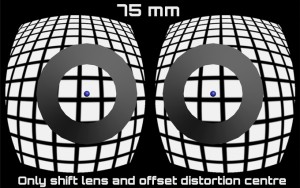
Oculus Rift field of view, showing barrel distortion of image. Source: Oculus.com
So, Virtual (and Augmented) reality differ from old-school media not in being 3D, but in the immersive field of view. This creates a change in the user experience that is much more dramatic than a bigger screen – it is more like the jump from static images to movies 100 years ago.
Reason 2:You can do it with a smartphone
Remember VirtualBoy? 20 years ago, this VR system features a headset, along with “haptics” – sensors that noted the motion of your head and body, and adjusted the virtual world accordingly. But VirtualBoy, along with others in the 1990s VR wave faded, and the Web became the dominant tech of the decade. The reason? Cost. A typical VR headset cost tens of thousands of dollars.
(virtualboy picture)
Today, you can start into VR for nothing – literally nothing. Google’s Cardboard initiative lets you set up a low-end VR system that is mostly wraparound and even at the zero price point, better than any VR that came before. The secret? Our smartphones these days are powerful. They have ultra high-resolution screens, fast processors, and effortless Internet connections.
(cardboard flat)
To make your smartphone into a VR node, you just slip it into a Google Cardboard box, and grab the appropriate VR app. The app “splits” the scene into stereo images. The lenses convert the smartphone images into wraparound VR.
If you want a better, and more “wraparound” experience, you can trade up to $99 for the Samsung GearVR. You still need your high-end smartphone, but the optics are better and you are really embedded in a true VR experience.
(gear vr)
Higher-end helmets, like Oculus Rift, and HTC Vive have their own electronics and display screen. They’re more expensive, but they deliver better resolution, contrast, and motion. With the cellphone solutions, you can see the pixels, even with most “retina display” screens. To completely fool the eye, smartphones will have to go to about 2k for each image, or 4k+ overall.
Reason 3: Unlike 3D Movies, it Actually Works Well
Remember the excitement over 3D movies that Avatar created in ####? In that year, numerous flatscreen TVs wre shipped with various attempts at 3D glasses. Never mind that 3D movies have been with us before -in the 1950s, and again in the 1970s. In both cases, they did not replace conventional “flat” movies. In fact, 3D movies, while still being created, are generally popular only with kids, and kid-style animation.
3D movies have the exact same problem that old-school VR did – they don’t create virtual reality as much as make you watch it through some binoculars or a small window. There’s no sense of “immersion” in the world – only a false-seeming window into third dimension where characters seem curiously like flat posters instead of 3D people.
In contrast, an Augmented Reality headset puts the “action” right in our living room. Microsoft’s Hololens movies a good example of that.
Virtual Reality puts you into the movie itself. Instead of a spectator, you are an actor. This is a huge challenge for filmmakers to work out how to tells stories in an environment similar to dinner theater, but fun for the rest of us.
In fact VR helmets will do more than replace 3D movies – hey will replace the flatscreens currently weighting down the wall in many a living room. A high-resolution VR helmet can simulate any flatscreen of any size. You can make your flatscreen 100, or 1000 inches, it is equally doable in VR.
What’s more it will be simple to create VR apps that reproduce classic movie experiences like Cinemascope wrap-around screens, and even IMAX screens. And, you’ll be able to sit in any seat in the house. Filmmakers have bemoaned the loss of the “theater experience.” With VR, they’ll get it back.
Replacing the flatscreen with a new kind of home theater may be the true “killer app” of VR.
Reason 4: Applications Extend Well Beyond Gamer Lust
Most stories you read on virtual and augmented reality this year are about two things: VR games and VR porn. We’re here to tell you that, despite the hype these are NOT the “huge” markets some expect. Gamers may indeed drive the high-end helmet market, but VR games aren’t going to be a mass-market item?
The reason? Barf bags.
Just like old-school VR, you can get carsick, airsick, whatistsick in VR if you move too rapidly, or, if the VR scene creates motion that doesn’t matche what your body is doing. One barf-o-matic source, laggy displays – has been largely fixed. But that doesn’t affect games, and gamers will probably need those bags strapped to their muzzle like a horse.
It’s simple to understand why, if you see what happens in so-called “realistic” computer games. Take a typical first-perso shooter. When you move forward, you are “runing” at about 40 miles per hour – twice as fast as any human can run. Even if you’re on a “treadmill” there will be a mismatch, and your stomach will know it.
High-end, “extreme” games involve motions that would cause anyone to barf, if they actually did the motions. Gamers and their sometimes out-of-shape bodies are protected from this by a flat screen. The moment you go into immersive VR, this changes.
Perhaps games can have a new kind of contest – see who can avoid barfing the longest! That’s a game we’ll watch in Twitch, which recently announced a VR version.
Reason 5: VR Porn Won’t be Significant
After games, the app most commonly predicted by the pundits is 3D porn. And companies have stepped into the fray to create 3D virtual lovers.
The problem? You guessed it. Barf. The movement creates motion sickness…
It is true that porn often is the first-mover into new media – witness the early 1980s on videotapes, or the 1990s for the Web. But VR is hardware and software. Like smartphones, it will be less appealing to porn than many people think. VR, when it finally enters homes with flatscreen-replacing headsets, will be firmly in the mainstream consumer market.
Reason 6: Apple Hasn’t Grabbed (and smothered) it
The strangest reason for the rise of VR has to be Apple. The company was clearly caught flat-footed by the increase in interest in 2014 and 2015, despite having developing QuickTime VR decades ago. While Microsoft has forged ahead with the Hololens, and Samsung, Oculus, and others develop consumer VR, Apple hasn’t so much as indicated a desire create a VR SDK (software dev kit) for iOS and Macs.
Why is this a sign that VR is a coming thing? It follows a pattern. Apple often creates great product concepts which fail. For every iPhone there is some like Newton, Apple’s early and failed PDA in the 1990s. QuickTime VR is a great example. The software allows “stitching” together images into a VR view, and was popular in the 1990s. But Apple never bothered to add the tools to make it immersive – in short, hardware cameras, or most importantly, a VR headset.
Apple also misses big things. In the early 1990s, there were more Macs on the Internet than Windows computers. Apple has a golden opportunity to become Netscape, and launch the “dotcom” revolution, rather than Marc Andressen. Instead, Apple ignored the Internet until the late 1990s, and didn’t bother to make a web browser until 2003 with Safari. By that time, the web has been created, and it was not in Apple’s image.
Anyone remember Cyberdog?
Apple discovers an area or invents a great idea, fails to implement, and in time, others take it up and make it great. The Mac’s visual interface was copied by Windows, companies like HP made the failed Newton concept into a practical idea. It wouldn’t be a surprise if the Apple Watch met the same fate.
In other words, Apple is following a typical path for VR, which if history is a guide may mean that VR itself is about to be big. We could be in the Web circa 1994 with VR.
Yes, it is Happening!
Hopefully this list of reasons will make you begin working on your company’s VR strategy for hardware or content. In future articles, we’ll explore

